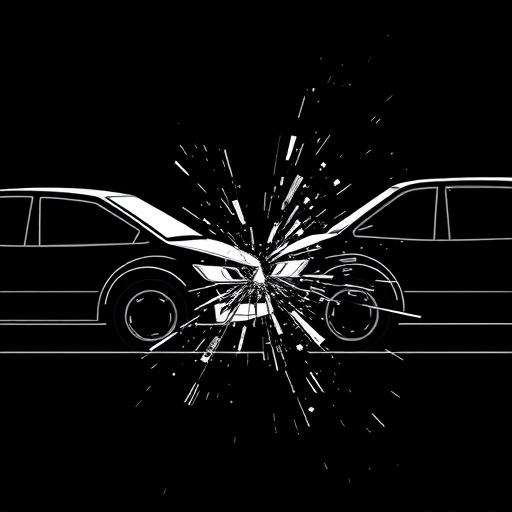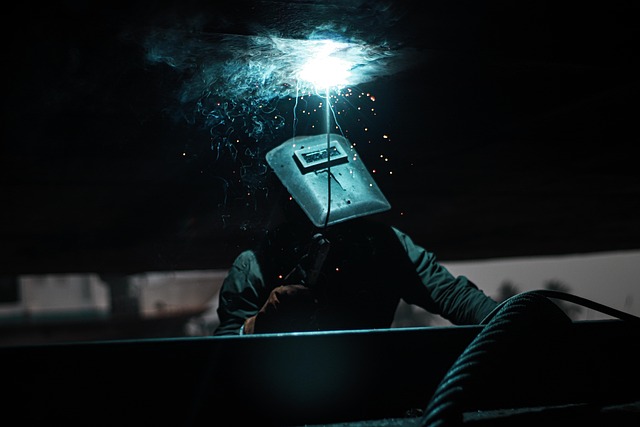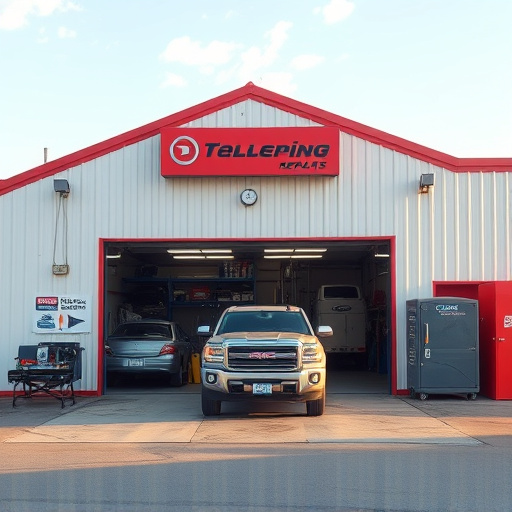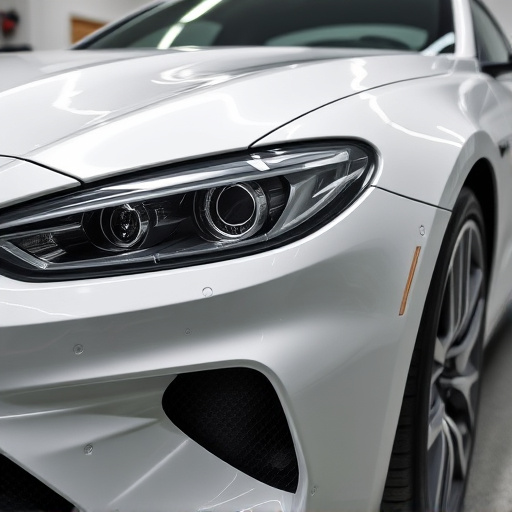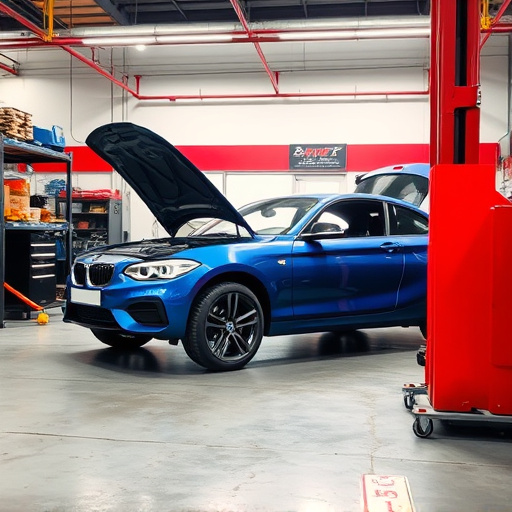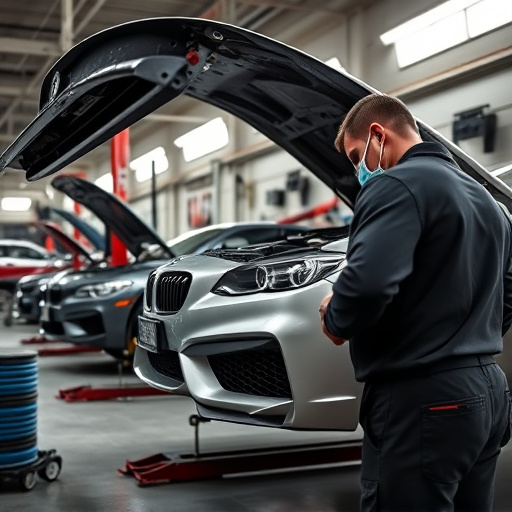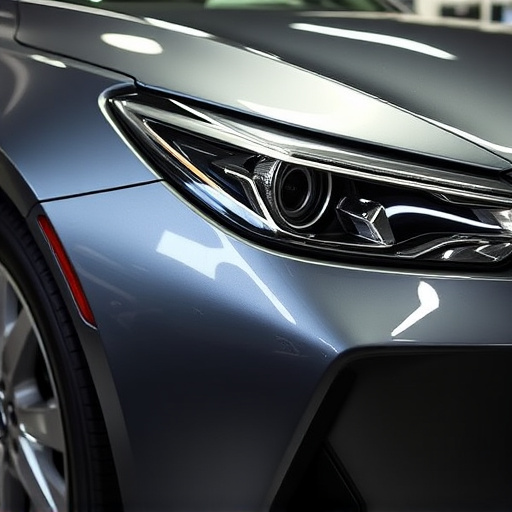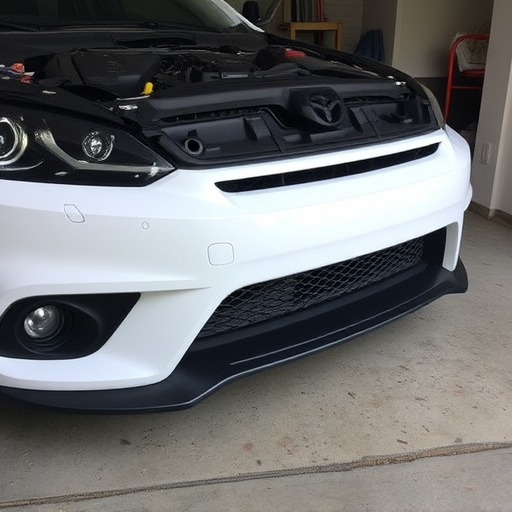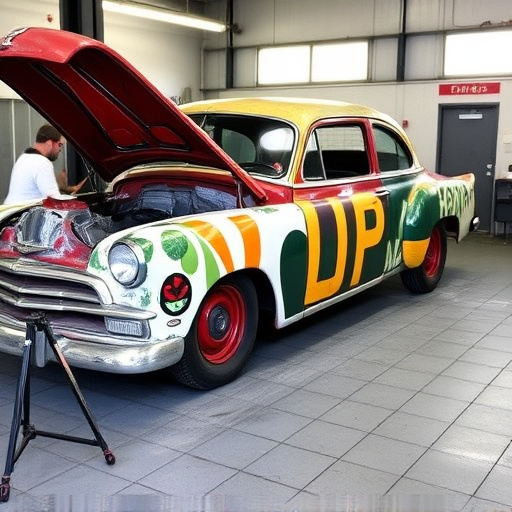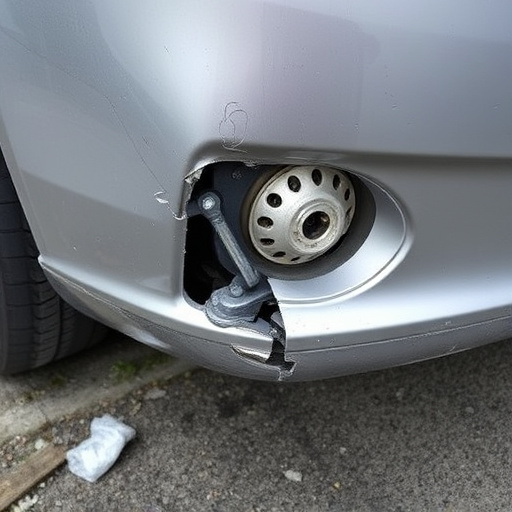In automotive aesthetics, achieving superior color matching excellence for matte, metallic, and pearl finishes is an art requiring skilled technicians to master tonal nuances and use advanced tools like spectrophotometers. Each finish type has unique light interaction properties, from flat surfaces in mattes to iridescent pearls, demanding specialized techniques and knowledge of chemical compositions for accurate results in autobody repairs and color changes.
In the realm of automotive and industrial coatings, achieving color matching excellence for matte, metallic, and pearl finishes is an art. This intricate process demands precision and a deep understanding of materials. From the subtle nuances of matte surfaces to the shimmering complexities of metallics and pearls, every shade requires meticulous attention. This article delves into the intricacies of these finish types, explores the science behind color matching, and provides practical insights for achieving flawless results. Discover how professionals ensure color consistency across diverse applications.
- Understanding Matte, Metallic, and Pearl Finishes
- The Science Behind Color Matching
- Achieving Perfection in Practice
Understanding Matte, Metallic, and Pearl Finishes
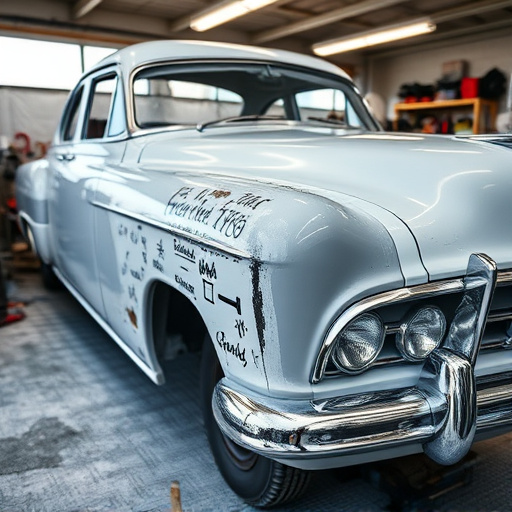
In the realm of automotive aesthetics, matte, metallic, and pearl finishes stand out as distinct and sought-after options for vehicle owners seeking that perfect look. These unique coatings are more than just visual appeal; they offer distinct benefits in terms of durability, scratch resistance, and low maintenance. Achieving color matching excellence for such finishes is an art, especially when considering the subtle nuances that can make a repair or restoration truly stand out, be it for a classic car restoration or a bumper repair.
Understanding these finishes requires a grasp of their chemical composition and application processes. Matte finishes are typically non-reflective and flat, offering a smooth texture that hides imperfections effectively. Metallic finishes add a gleam with pigmented colors that interact with light, creating depth and shine. Pearl finishes, known for their iridescent effect, combine metallic layers with special pigments to produce a mesmerizing, almost mystical glow. For professionals in the field, especially those engaged in vehicle dent repair or classic car restoration projects, mastering color matching excellence for these finishes is crucial to ensuring that every detail—from the sleekest metallic sheen to the subtlest pearl tint—aligns perfectly with the original specifications and aesthetic intent.
The Science Behind Color Matching
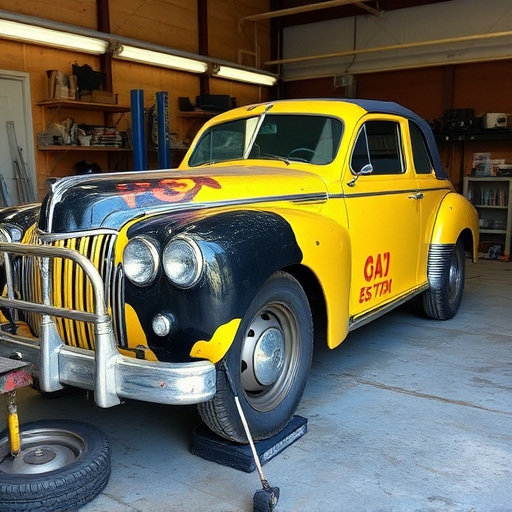
The art of color matching excellence for matte, metallic, and pearl finishes involves a complex interplay between science and skill. It’s not merely about mixing pigments; it’s understanding the intricate chemistry behind each finish type and their unique interaction with light. For instance, matte paints create a flat, non-reflective surface by reducing light reflection through specific pigment choices and coating techniques. In contrast, metallic finishes harness mica or other reflective particles to capture and scatter light, creating a shimmering effect. Pearl coatings, on the other hand, combine both matte and metallic elements, relying on microscopic glass flakes for their distinctive iridescent appearance.
Achieving precise color matching in autobody repairs, tire services, or car paint repair requires meticulous attention to detail. Professional technicians utilize advanced tools and equipment like spectrophotometers to measure color accurately. These devices analyze light reflected from the surface, determining the exact hues, tints, and shades present, ensuring that any reproduction matches seamlessly. The science behind color matching excellence is a dynamic field, constantly evolving with new technologies and innovations in automotive coatings, pushing the boundaries of what’s possible in creating stunning, durable finishes.
Achieving Perfection in Practice
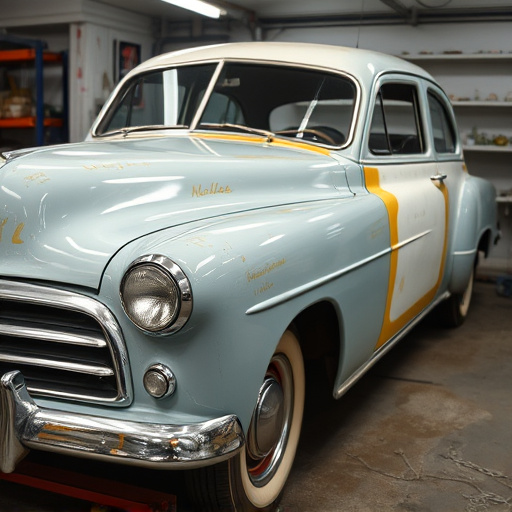
In the realm of automotive aesthetics, achieving color matching excellence for matte, metallic, and pearl finishes is a delicate art. It’s not just about selecting the perfect hue; it involves mastering the subtle nuances that bring a vehicle’s paint job to life. This meticulous process demands precision and expertise, especially when considering the various factors that can impact the final result. Skilled technicians in auto body services employ advanced techniques and tools to ensure accuracy, from color analysis to innovative application methods.
Through hands-on experience and a deep understanding of materials, professionals in the field navigate the challenges presented by different finishes. For instance, metallic paints, known for their shimmering effect, require careful handling to maintain clarity and depth, while pearl coatings offer a unique, iridescent finish that’s both visually stunning and technically demanding. Whether it’s addressing minor dents and scratches through autobody repairs or performing complete color changes, the goal remains consistent: to deliver exceptional color matching excellence that enhances the car’s overall beauty and value.
In the pursuit of achieving color matching excellence for matte, metallic, and pearl finishes, understanding the unique characteristics of each finish and leveraging scientific principles behind color theory has proven indispensable. By delving into these aspects, professionals can navigate the intricate process of creating harmonious colors with precision and skill. With continuous advancements in technology and an ever-evolving palette of options, achieving flawless results is more attainable than ever before, ensuring that every project reflects a testament to meticulous craftsmanship and aesthetic brilliance.

